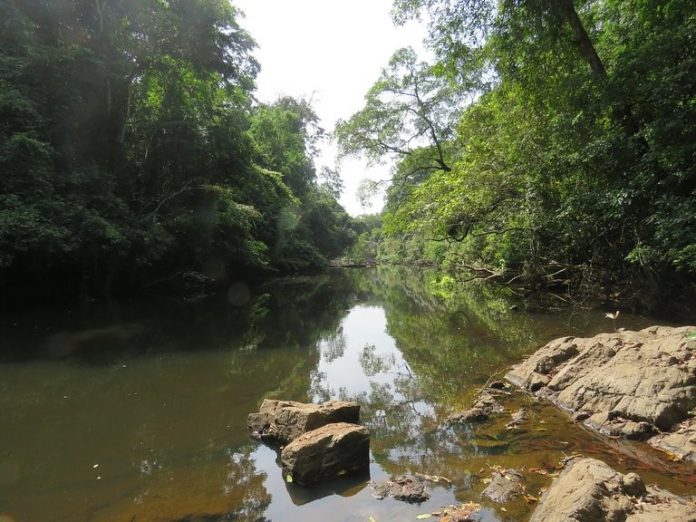By Amin Kef Sesay
It has been agreed that the Gola National Park, which is home to several endangered species, is expected to be jointly managed by the Governments of Liberia and Sierra Leone in a bid to vigorously fend off encroachment and protect its biodiversity.
The management agreement, which is an amended Memorandum of Understanding, will obligate both parties to jointly share the management of the forest, including the protection of biodiversity and all others related to conservation.
According to a release from the Forestry Development Authority (FDA), the signing ceremony of the amended MOU took place at the C. Cecil Dennis Hall at the Ministry of Foreign Affairs on February 18, 2020.
“The amended MOU signing represents a renewed commitment of both countries to effectively manage the Gola Forest Transboundary Landscape which will be named Gola Transboundary Peace Park,” the release said.
Gola National Forest, which covers 150,000 hectares of land from Liberia to Sierra Leone, represents one of the largest remaining blocks of the Upper Guinea Forest, the release indicated.
However, when adjacent smaller forests lands are considered, including community forests and the proposed Foya Nature Reserve in Liberia, this massive forest landscape measures over 350,000 hectares, equivalent to about a half-million football fields.
Besides, its landscape, the forest is a recognized biodiversity hotspot–and home to more than 899 vascular plants, 49 mammals, 327 bird species, and 43 amphibians.
“Many of the forest wildlife and plants are threatened or critically endangered, including rosewood, the forest elephant, the West African chimpanzee, western red colobus monkey, and pygmy hippopotamus,” the release said. “The forest hosts many of the territorial Mano River Union states watersheds and plays a critical function through the range of ecosystem services that it provides and contributes to the mitigation of climate change impacts. Thus, its health is of global importance.”
The signing of the amended MOU comes at a time when illicit miners, especially Sierra Leoneans, have invaded the forest from Liberia end and extracting gold and diamonds, and smuggling them across the border to Sierra Leone.
Some illicit miners stand near of the equipment use to extract mineral like gold from the forest.
According to Residents of Porkpa District, Grand Cape Mount County, illicit miners have encroached on the protected forest, digging huge pits and felling trees. Such acts violate Liberia’s mineral and mining law, wildlife Law and undermine the intent of park creation, which is to protect Liberia’s rich biodiversity.
Although the park should be protected by forest rangers from the FDA, they are outnumbered by the illicit miners and lack weapons for patrol. The forest, which is home to an estimated 500 illicit miners, has only 29 forest rangers for the park security, a task, which is not easy to maintain, given their numbers.
“The forest is big. We have car and motorbike, but we usually patrol the forest on foot since there is no road,” concedes Sam Gaye, one of seven rangers stationed on the Cape Mount side of the park.
The MOU signing comes 9 years after the previous Presidents of Liberia and Sierra Leone signed an MOU on cooperation in the management, research, protection, and conservation of the Greater Gola Transboundary Peace Park.
In doing so, the two presidents noted their “mutual interest in continuing and strengthening joint management and conservation of national parks close to or contiguous with the border to conserve shared resources and ecosystems.”
In 2018, West Africa Biodiversity and Climate Change (WA BiCC) supported a meeting of technical representatives to lay the groundwork for the first meeting of the planning and Coordination Committee, including the development of a draft work plan.
“FDA is grateful to the USAID-funded WA BiCC program which supported several transboundary multi-stakeholder meetings in advance of the MOU signing. Through signing the amendments, Liberia and Sierra Leone will refocus their efforts on preserving and sustainably managing their shared resource.
“Together, they will seek to curtail the main drivers of the forest’s continued deforestation and degradation and biodiversity loss, including illegal hunting and poaching, mining, chainsaw logging, shifting cultivation/agricultural encroachment, and water pollution,” the release added.





